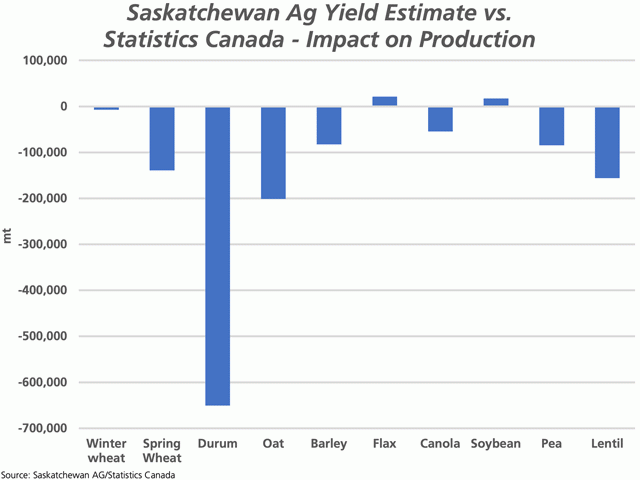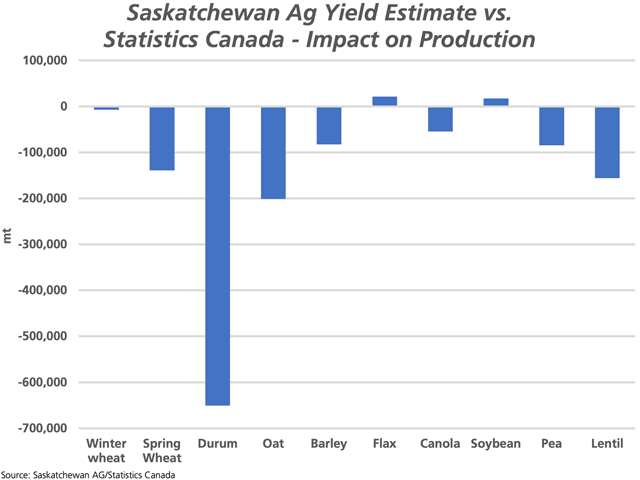Canada Markets
Saskatchewan Government Yield Estimates Versus Statistics Canada
Risk remains in Canadian grain markets that this year's prairie crop may be revised lower as we further assess actual production. The Saskatchewan government signaled this in the Oct. 4 Crop Report, with fresh yield estimates released for major crops based on the work of 189 volunteer crop reporters across the province. As of this week, an estimated 99% of the entire crop is estimated to be harvested, ahead of the 79% five-year average.
The attached chart compares the province's latest estimates to the most recent Statistics Canada official sites, which were based on August satellite or model-based estimates and released on Sept. 14.
Direct comparisons were made for all the selected crops on the chart except for wheat. While Saskatchewan released estimates for both hard red spring wheat and other wheat, which includes classes other than HRS, Statistics Canada has only provided an estimate for spring wheat and will break this estimate down into classes in its final December result. An average spring wheat yield was calculated for Saskatchewan using the five-year average of the HRS to total spring wheat acres ratio.
P[L1] D[0x0] M[300x250] OOP[F] ADUNIT[] T[]
Of the crops shown, the latest provincial yield estimate would result in a smaller crop for all crops except for flax and soybeans, although the increase for these two crops is modest.
The largest change in production is seen for the durum crop. The Saskatchewan government estimated the durum yield at 19 bushels per acre, with a wide range shown from 15 bpa in the Southwest Region to a high of 33 bpa in the Southeast Region. This compares to the official estimate of 24.4 bpa, while calculated across Statistics Canada's harvested acre estimate of 4.4266 million acres, would lead to downward revision in production of 650,545 metric tons. This comes at a time when durum production is already forecast at the lowest level in 11 years and global media is already reporting a combination of escalating prices and empty store shelves.
Saskatchewan data would also lead to a 139,211 mt lower revision in spring wheat production, 201,069 mt lower revision for oats, 82,571 mt for barley, 54,589 mt for canola, 84,459 mt for peas and 155,747 mt for lentils.
Uncertainty over the true crop size may or may not be resolved with the release of the December Statistics Canada reports.
Watch for this week's 360 Poll on the DTN Canada site for your chance to tell us which crop will lead to the biggest surprise when Statistics Canada reports in December.
Cliff Jamieson can be reached at cliff.jamieson@dtn.com
Follow Cliff Jamieson on Twitter @Cliff Jamieson
(c) Copyright 2021 DTN, LLC. All rights reserved.






Comments
To comment, please Log In or Join our Community .